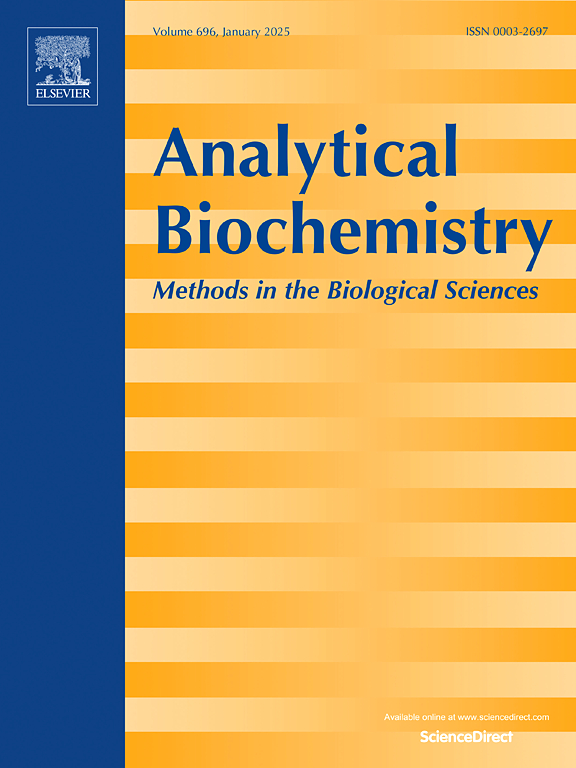AFP-MCDF: Multi and cross-dimensional feature fusion methods for antifreeze protein prediction
IF 2.5
4区 生物学
Q2 BIOCHEMICAL RESEARCH METHODS
引用次数: 0
Abstract
Antifreeze proteins can effectively inhibit the formation of ice crystals and enhance cell survival in low-temperature environments. They protect the texture prolong the shelf life of food and maintain cell and tissue integrity in medical treatments, thereby improving the success rate of surgery and transplantation. Accurate prediction of Antifreeze proteins is important to advance these fields. Traditional wet-experiment methods, while providing reliable validation results, are usually time-consuming and costly. And existing computational methods still have room for improvement in predicting performance. In this study, a novel antifreeze protein prediction method, AFP-MCDF, is proposed. The AFP-MCDF method first extracts one- and two-dimensional feature representations of Antifreeze protein sequences using the pre-trained protein language models ProtBERT and ESM-2. Subsequently, these features are fused multidimensionally via BiLSTM and TextCNN to capture long-term dependencies and local features. Finally, the method predicts the frost resistance of Antifreeze protein sequences by cross-dimensional fusion and linear mapping from N to 2 dimensions. Experimental results show that AFP-MCDF performs well in the antifreeze protein prediction task, outperforming traditional computational methods and reaching the current state-of-the-art.

AFP-MCDF:用于抗冻蛋白预测的多维和跨维特征融合方法
抗冻蛋白能有效抑制冰晶的形成,提高低温环境下细胞的存活率。它们保护了食物的质地,延长了食物的保质期,在医疗中保持了细胞和组织的完整性,从而提高了手术和移植的成功率。准确预测抗冻蛋白对这些领域的发展具有重要意义。传统的湿法实验方法虽然能提供可靠的验证结果,但通常耗时且成本高。现有的计算方法在预测性能方面仍有改进的余地。本研究提出了一种新的抗冻蛋白预测方法——AFP-MCDF。AFP-MCDF方法首先使用预训练的蛋白质语言模型ProtBERT和ESM-2提取抗冻蛋白序列的一维和二维特征表示。随后,通过BiLSTM和TextCNN对这些特征进行多维融合,以捕获长期依赖关系和局部特征。最后,通过交叉维融合和从N到2维的线性映射来预测抗冻蛋白序列的抗冻性。实验结果表明,AFP-MCDF在抗冻蛋白预测任务中表现良好,优于传统的计算方法,达到了目前的水平。
本文章由计算机程序翻译,如有差异,请以英文原文为准。
求助全文
约1分钟内获得全文
求助全文
来源期刊

Analytical biochemistry
生物-分析化学
CiteScore
5.70
自引率
0.00%
发文量
283
审稿时长
44 days
期刊介绍:
The journal''s title Analytical Biochemistry: Methods in the Biological Sciences declares its broad scope: methods for the basic biological sciences that include biochemistry, molecular genetics, cell biology, proteomics, immunology, bioinformatics and wherever the frontiers of research take the field.
The emphasis is on methods from the strictly analytical to the more preparative that would include novel approaches to protein purification as well as improvements in cell and organ culture. The actual techniques are equally inclusive ranging from aptamers to zymology.
The journal has been particularly active in:
-Analytical techniques for biological molecules-
Aptamer selection and utilization-
Biosensors-
Chromatography-
Cloning, sequencing and mutagenesis-
Electrochemical methods-
Electrophoresis-
Enzyme characterization methods-
Immunological approaches-
Mass spectrometry of proteins and nucleic acids-
Metabolomics-
Nano level techniques-
Optical spectroscopy in all its forms.
The journal is reluctant to include most drug and strictly clinical studies as there are more suitable publication platforms for these types of papers.
 求助内容:
求助内容: 应助结果提醒方式:
应助结果提醒方式:


